This is one in a series of posts on the Fujifilm GFX 100S. You should be able to find all the posts about that camera in the Category List on the right sidebar, below the Articles widget. There’s a drop-down menu there that you can use to get to all the posts in this series; just look for “GFX 100S”.
There have been a few people advocating the use of the Fujifilm 250 mm f/4 GF lens with the Fuji 1.4x teleconverter on a GFX 100 or GFX 100S for wildlife, arguing that the combination provides much better than full frame quality. I’ve used that combination, and not found it to be particularly sharp, so I thought I’d test it against a much lower resolution camera with an excellent zoom lens. I picked a Nikon Z7 and the Nikon 180-400/4E zoom.
The combination of the 250/4 and the 1.4x PC yields a 350 mm f/5.6 lens. I tested that against the Nikon combination at f/5.6 at the 250 mm and 350 mm focal lengths. The 250 mm focal length on the Nikon yields the same vertical angle of view as the 350 mm on the GFX. The 350 mm focal length on the Nikon provides a comparison that would be valid if we want to compare the Z7 with the GFX 100S set to a full frame crop. I made exposures with the GFX 100S at f.5.6 and f/8, so we can compare at the same f-stop and at equivalent f-stops for the uncropped comparison.
Here’s the test scene:
I used the slanted edge at the left for the quantitative results.
Test conditions:
- RRS carbon fiber legs
- C1 head
- 10-second self-timer
- Manual focusing
- Six shots with each combination, pick the sharpest using Imatest
- ISO 100
- Developed in Lightroom 10.2.
- Sharpening: amount = 0
- White balanced to gray part of the slanted edge
Imatest results, first for the GFX 100S:
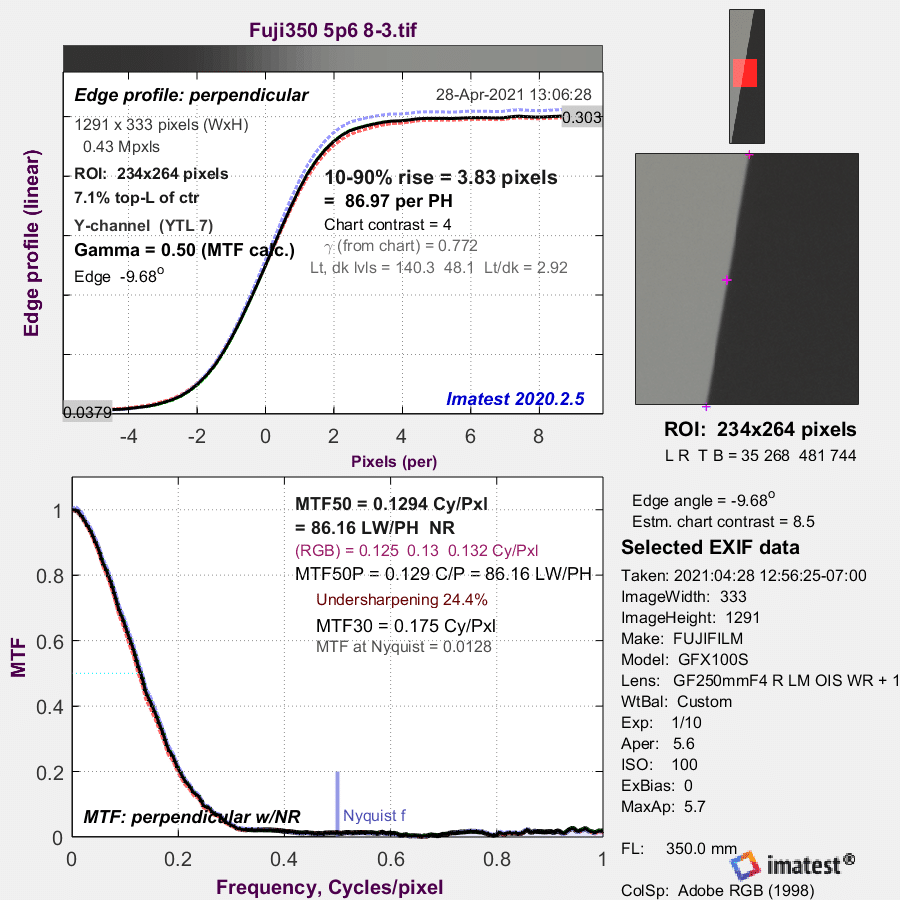
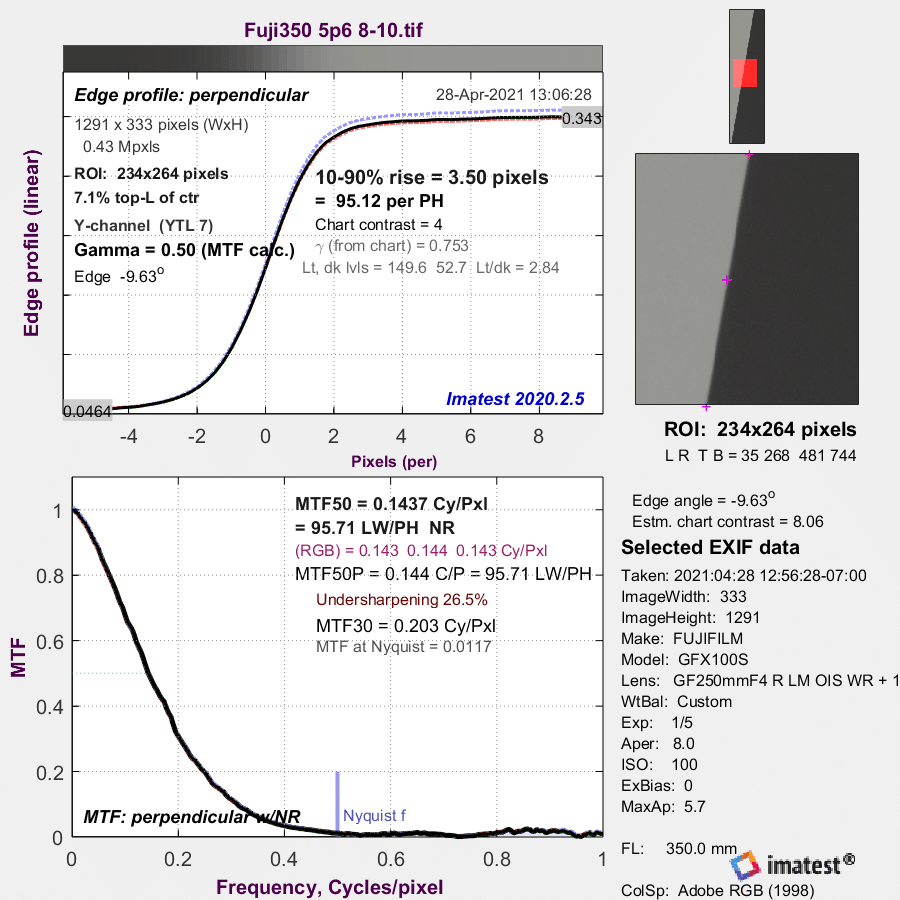
F/8 is better than f/5.6. Neither one is going to win any sharpness prizes.
And now for the Nikon:
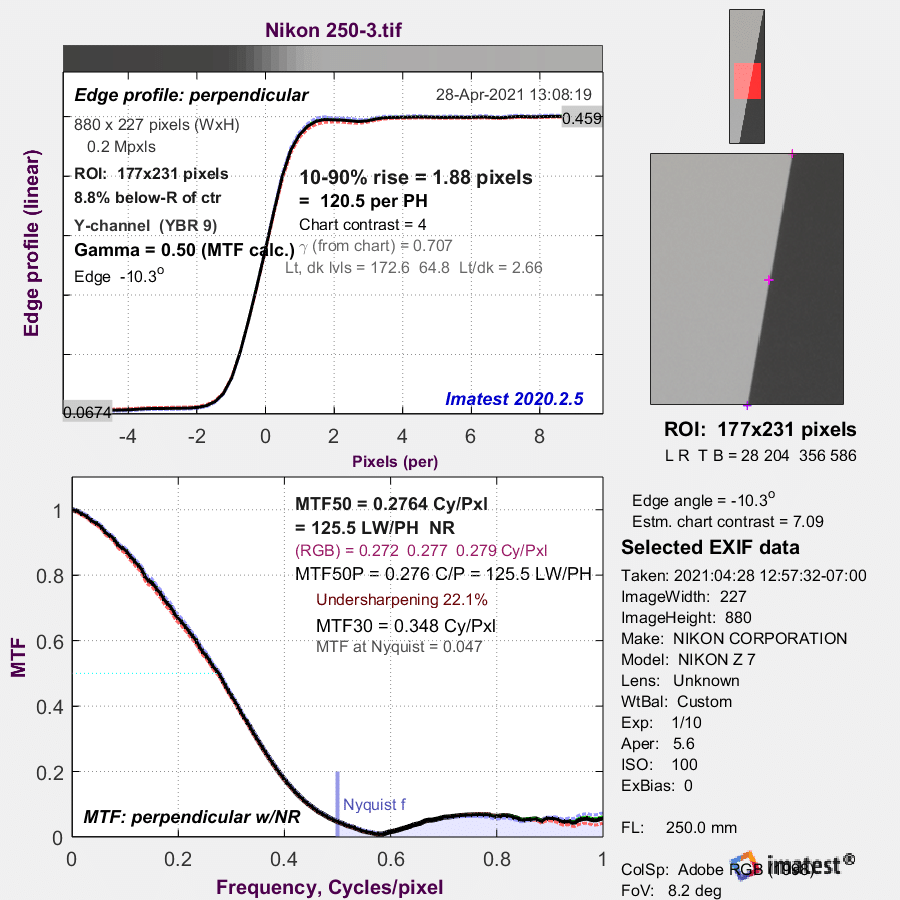
This is the equivalent focal length, but the pixel pitches are different, so we’ll have to do some math to compare. The f/5.6 case for the GFX 100S yields 0.129 cycles per pixel, or 0.129 * 8736 = 1127 cycles per picture height. F/8 for the GFX 100S yields 0.144 cycles per pixel, or 0.144 * 8736 = 1258 cycles per picture height. The f/5.6 case for the Z7 yields 0.276 cycles per pixel, or 0.276 * 5504 = 1519 cycles per picture height. The Nikon combination is materially sharper, even though the pixel pitch is coarser.
If we set the Nikon lens to 350 mm:
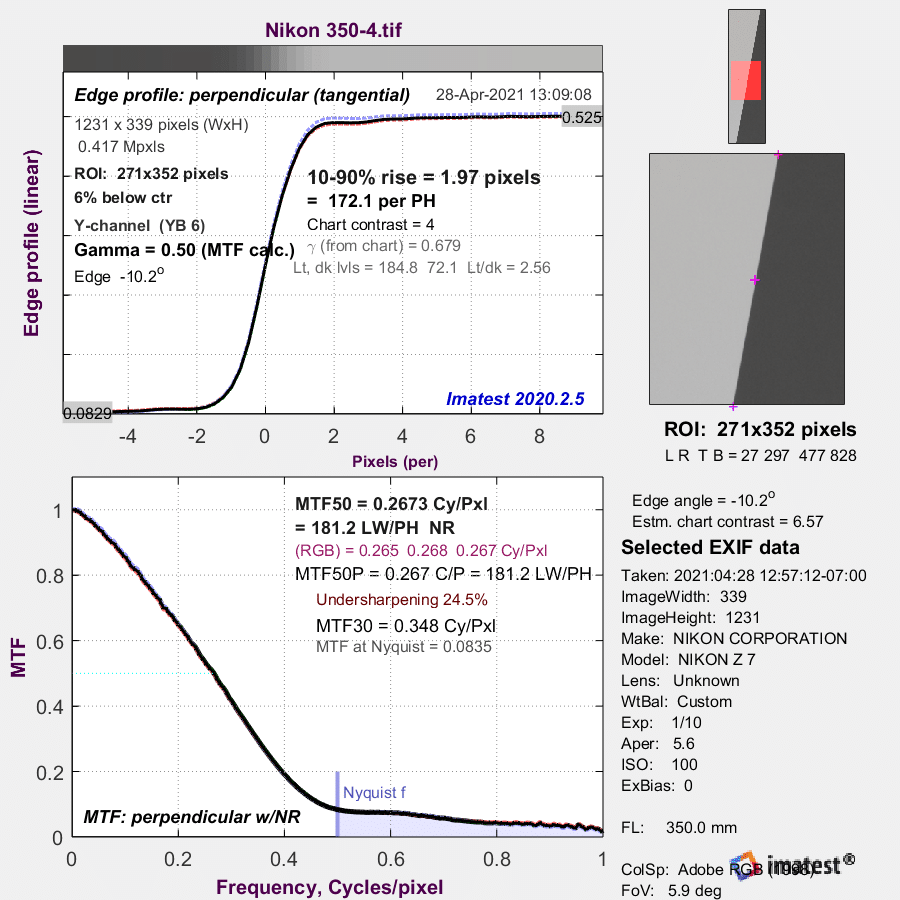
Now let’s consider what you’d get with the 35 mm crop feature of the GFX 100S invoked. The f/5.6 case for the Z7 yields 0.267 cycles per pixel, or 0.267 * 5504 = 1470 cycles per picture height. The f/5.6 case for the GFX 100S yields 0.129 cycles per pixel, or 0.129 * 6354 = 820 cycles per picture height. You’d be a lot better off with the Nikon setup.
But what about aliasing? You can see by the light-blue shaded areas in the Nikon curves above that there is some of that with the Nikon combination. Let’s eyeball it, at roughly 1:1 magnification for the Fuji images and quite a bit more than that for the Nikon ones, to keep the same vertical field of view.
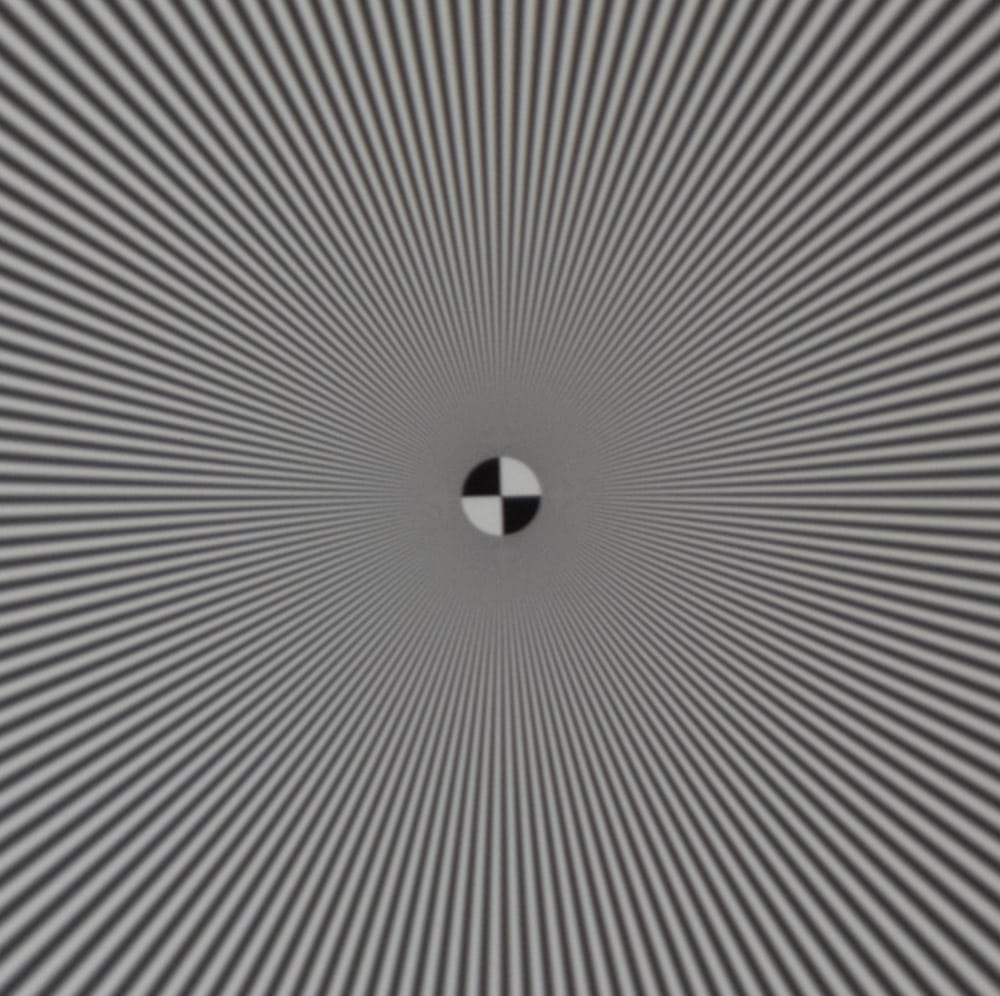
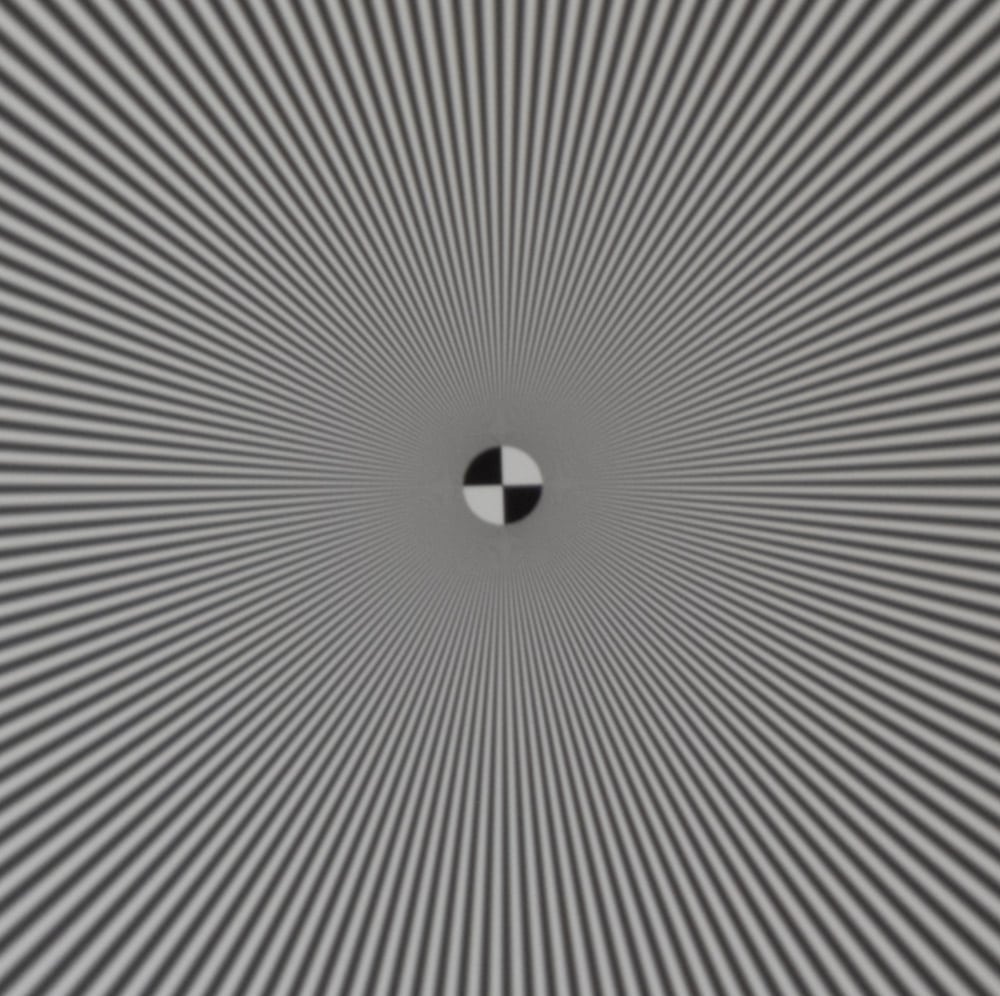
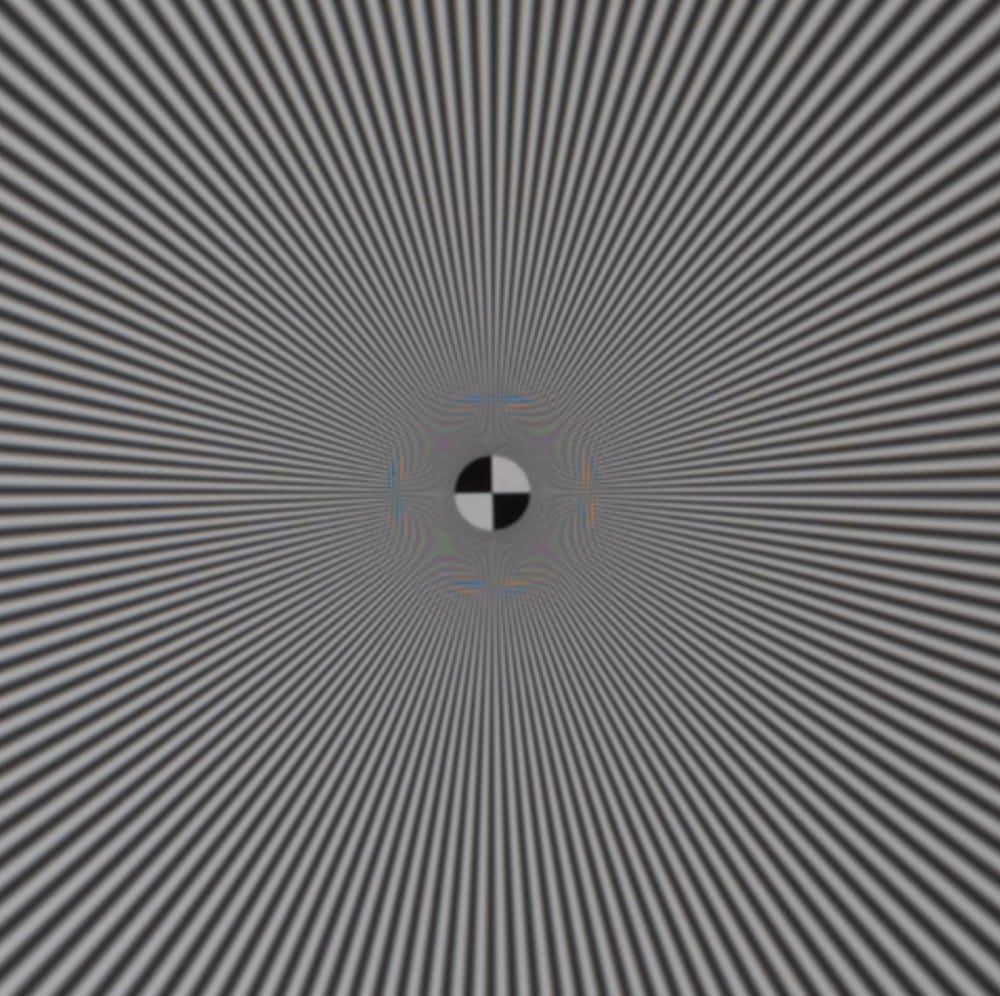
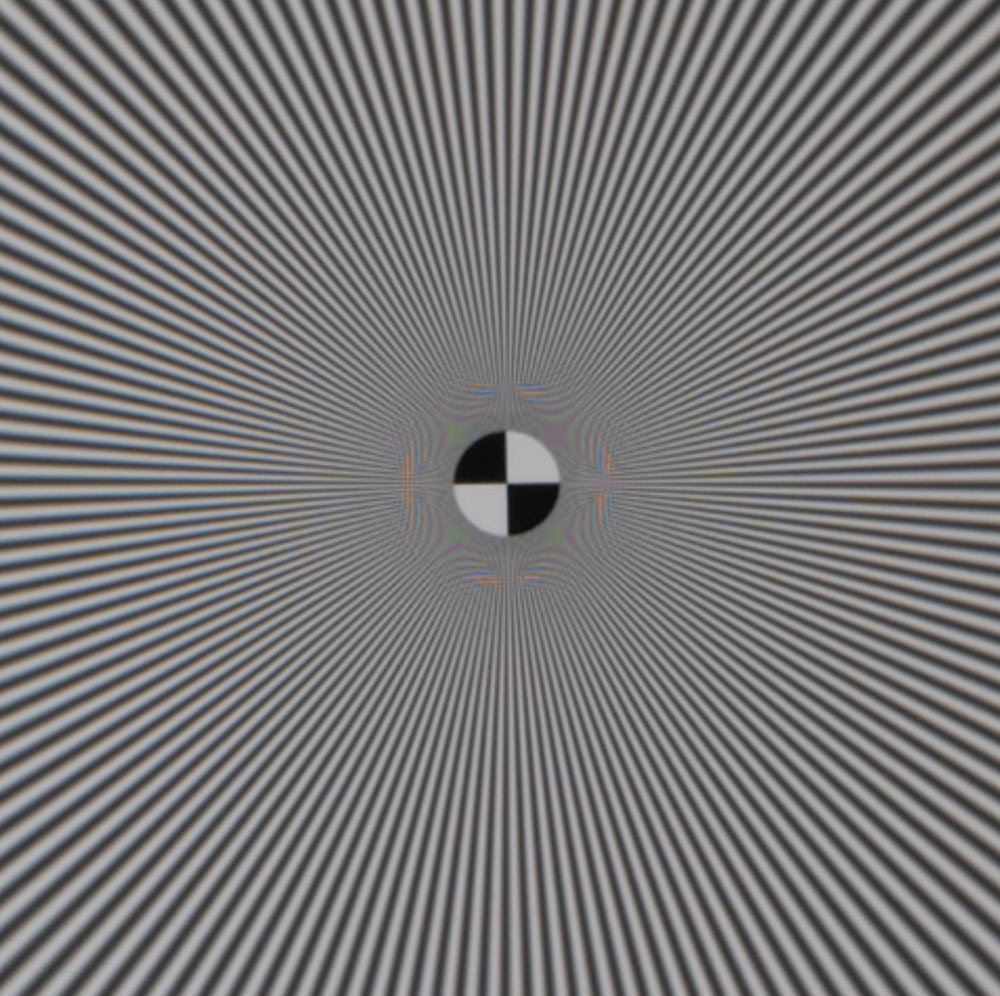
You can see the aliasing quite distinctly. The Nikon zoom needs a finer-pitch sensor. Remember, this is a sinusoidal Siemens Star, so the edges aren’t supposed to be crisp. Also, this was with zero sharpening.
My take is that, especially for birds, for which aliasing is often an issue, the 250/4 and the 1.4X TC isn’t a bad choice. It’s not as sharp as a decent medium-high res full frame MILC with a really good zoom, though.
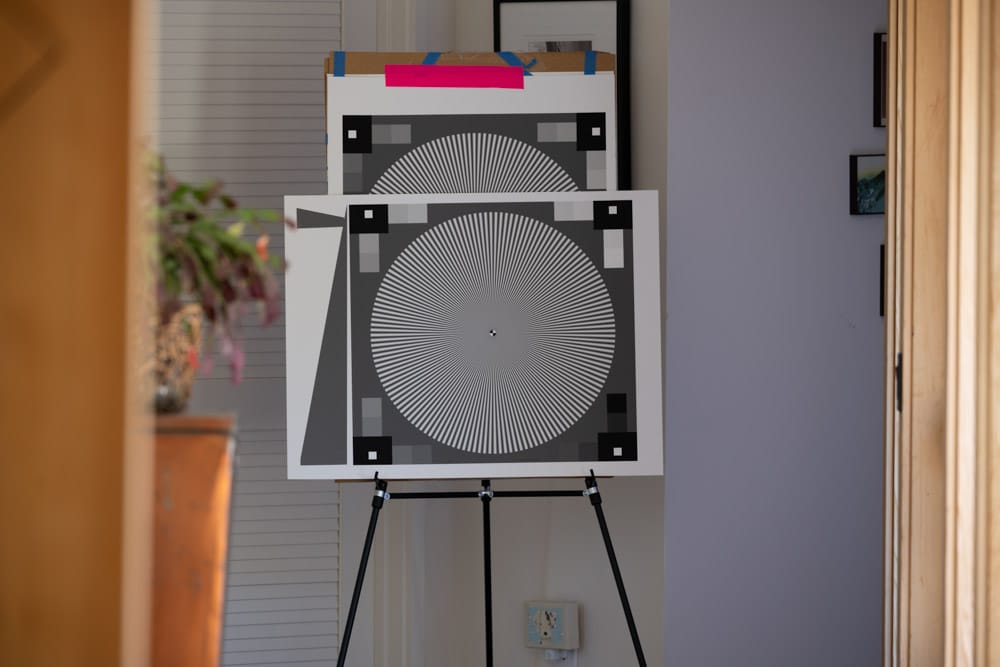
Ilya Zakharevich says
Misprint:
> at the 250 mm and 250 mm focal lengths
JimK says
Fixed. Thanks.
John K says
Very informative, thank you. I have to say though that the GF ‘350’ combo on the GFX 100 produces stunning bird photography with tremendous intricate feather detail and great tonal transitions. It’s so good at rendering bird textures and tonal gradient I am shooting sometimes for black and white bird ‘portraits.’ The Nikon zoom must be bitingly sharp!
JimK says
With birds, you don’t want the lens too sharp, since feathers are prone to visible aliasing. The Nikon zoom is incredibly sharp, and, for the price, it had better be.